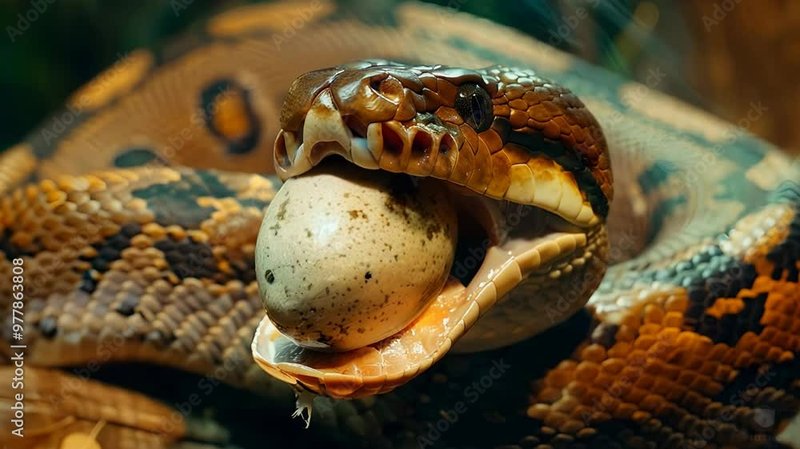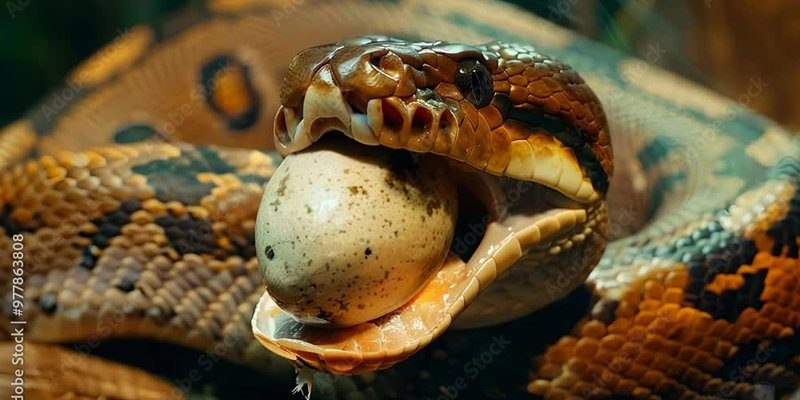
Imagine a bustling neighborhood where everyone has a job; that’s what a healthy habitat looks like. Each creature, including the boa constrictor, fulfills its role to keep things running smoothly. In this article, we’ll explore how boa constrictors fit into their natural habitats, their hunting strategies, and how they interact with the environment around them. It’s almost like watching a well-choreographed dance in nature!
The Natural Habitat of Boa Constrictors
Boa constrictors are primarily found in the tropical rainforests of Central and South America, but they also inhabit savannas and semi-arid areas. These habitats provide the humidity and warmth that boa constrictors thrive on. They prefer places with plenty of cover, like dense foliage and trees, where they can hide and prey on unsuspecting animals.
Let’s break it down a bit. The rainforest is like a giant, vibrant city for wildlife. It’s bustling with life and offers a variety of food sources for the boa constrictor. From birds to small mammals, these snakes have a diverse menu that keeps them healthy and strong. The foliage not only protects them from predators but also helps regulate their body temperature.
In contrast, in dryer regions, you might find them residing near water sources. Here, they can still find the cover they need while adapting to the different conditions. Their ability to thrive in various habitats shows just how resilient these creatures are. They’re truly nature’s survivors!
The Hunting Techniques of Boa Constrictors
Here’s the thing: boa constrictors are ambush predators. They don’t chase after their food like some other snakes. Instead, they remain still and wait for the perfect moment to strike. This patience is key to their hunting strategy. When their prey comes too close, they lunge out, wrap around it, and constrict tightly.
But how do they choose their meals? Boa constrictors typically hunt small mammals, birds, and other reptiles. Their sense of smell plays a major role in tracking down meals. By flicking their tongues, they pick up scent particles in the air, which leads them to potential prey. It’s like a built-in GPS system that helps them find food without being seen.
Once they catch their meal, they squeeze just enough for it to pass out without causing fatal damage. This strategy allows them to consume large prey whole. You might be surprised to learn that boas can consume animals up to the size of a small deer! That’s no small feat for a snake, but their strength and technique make it possible.
The Role of Boa Constrictors in Ecosystem Balance
Boa constrictors are essential to the balance of their ecosystems. By preying on various species, they help control animal populations. Imagine a world without these snakes—the population of their prey could explode, which might lead to overgrazing or other issues.
For example, if there were too many rodents in an area, they could eat up all the plants, damaging the vegetation and making it harder for other species to thrive. Boa constrictors act like a natural thermostat, keeping the ecosystem in check. By regulating these populations, they help maintain biodiversity and ensure that no single species overwhelms the environment.
Interestingly, boa constrictors also contribute to the food web as prey for larger predators, like eagles and big cats. This further illustrates their role in the natural cycle of life. They are connected to many aspects of their surroundings, highlighting how pivotal they are in their habitats.
Adaptations of Boa Constrictors
To survive in their environments, boa constrictors have developed several remarkable adaptations. One major adaptation is their excellent camouflage. Their skin patterns, which often blend seamlessly with leaves and branches, help them hide from both predators and prey. This ability to blend in makes it easier for them to ambush without alerting their target.
Another adaptation is their ability to constrict. When they wrap around their prey, they don’t just hold on tight; they apply pressure with every exhale. This unique method means that the prey suffocates, allowing the boa to swallow it whole. It’s a fascinating survival technique that showcases their strength and efficiency.
Boa constrictors have also evolved to have a flexible jaw. This jaw structure allows them to consume animals that are much larger than their head. It’s a clever design that makes them effective hunters, ensuring they can take advantage of a variety of food sources in their habitat.
Conservation Status and Threats
Despite their important role in the ecosystem, boa constrictors face several threats. Habitat destruction is a major issue, as forests are cut down for agriculture and urban development. This loss of habitat not only reduces their living space but can also diminish their food sources.
Additionally, boa constrictors are often hunted for their skins and captured for the pet trade. This illegal poaching puts additional pressure on their populations. Conservation efforts are crucial to ensuring that these magnificent snakes can continue to thrive in their natural habitats.
You might be wondering how you can help. Supporting wildlife conservation organizations and spreading awareness about the importance of boa constrictors can make a difference. Every small action can contribute to the protection of these incredible creatures and their environments.
The Fascinating Life of Boa Constrictors
Boa constrictors are more than just their hunting prowess; they have intriguing social interactions and reproductive behaviors as well. Male boa constrictors engage in combat during mating season, where they coil around each other in an effort to impress females. It’s like a dance-off, but with a very real purpose behind it.
After mating, females give birth to live young, typically between 15 to 65 baby boas depending on their size and health. These hatchlings are born with instincts to hunt right away, which is pretty remarkable. They don’t have the luxury of relying on their parents for food. Instead, they must learn quickly how to survive in a world that is sometimes chaotic and dangerous.
As they grow, boa constrictors can live for 20 to 30 years in the wild, and even longer in captivity. Their longevity allows them to play a continuous role in their habitat, influencing the ecosystem throughout their lives.
In summary, the boa constrictor is a key player in its natural habitat, bringing balance and vitality to its ecosystem. From their unique hunting techniques to their adaptations that help them thrive, these snakes demonstrate the beauty of nature’s design. They are critical in maintaining healthy populations of other species, and their survival is intertwined with the health of their environment.
As you think about the boa constrictor, remember that they symbolize the interconnectedness of life in the wild. Each creature has its role, and it’s essential that we work to protect these roles so that the delicate balance of nature continues. So, the next time you see a picture of a boa constrictor or read about one, you’ll appreciate not just the snake itself, but the vital part it plays in the grander ecological tapestry.

